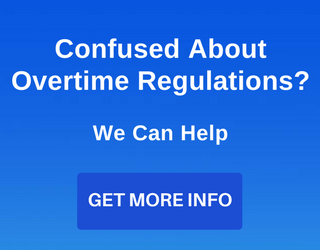5 min read
FLSA 101 UPDATED: Surviving the New Overtime Rules
It's been a strange few months. As we told you in July, FLSA changes are on their way. But these changes seem to be, well, changing. Here are the...
Expert payroll management services with a personal touch.
View Solution Read Guide HR Support
HR SupportSimplify and personalize HR with a team of HR experts on-demand.
View Solution Read Guide Time & Attendance
Time & AttendanceWhy spend more unnecessary time and money managing your workforce?
View Solution Read Guide Hiring & Onboarding
Hiring & OnboardingTurn your candidates into employees with hiring & onboarding solutions.
View Solution Read GuideAdd On Solutions automate everyday tasks, prevent mistakes, and simplify business compliance.
View SolutionHelpful downloads and eBooks to empower your business.
Helpful tax and HR alerts to help keep your business compliant.
Payroll and tax-related forms and documents.
Horizon's blog provides valuable insight into payroll, compliance, human resources, and more.
See our client success stories for a case study on how we can help your business.
Payroll and HR strategy requires intelligent technology, personal attention and specialized expertise in the needs and nuances of your business.
We provide payroll and tax processing services for businesses from 1 to 1,000 employees or more. Today, we have nearly 1,000 customers in 40 states.
2 min read
Brad Johnson : April 7, 2017 at 11:35 AM

The Fair Labor Standard Act (FLSA) final rule on overtime was to take effect on December 1, 2016. Last fall, we explained the changes and gave some tips for compliance. Then in September, a lawsuit was filed to challenge the final rule. What’s happened since then? Let us bring you up to speed.
I’ll See You in Court … Maybe
Timeline
If confirmed, Acosta could continue the appeal against the injunction or drop it, stopping the rule change. Or he could start over and “propose an administrative delay of the rule as revised by the Obama administration, followed by a new notice of proposed rule-making and comment period, leading to a new final rule … a year or so down the road,” says Tammy McCutchen, former administrator of the DOL Wage and Hour Division during George W. Bush administration.
We’ll have to wait and see.
What’s an Employer to Do?
Where does this leave you, the employer? The short answer is that as of right now, you don't have to implement the new rule.
But what if you have already made changes to employee salaries or classifications? Here are five tips:
So - stay in the know. If you need help traversing the murky waters, contact a seasoned professional.


5 min read
It's been a strange few months. As we told you in July, FLSA changes are on their way. But these changes seem to be, well, changing. Here are the...

2 min read
Did you know the Department of Labor (DOL) has proposed some big changes to the Fair Labor Standards Act? You need to be ready for these changes, as...

5 min read
You've probably heard a lot lately about the FLSA rule changes. I know we've blogged about it (along with many others). We've also heard that the...